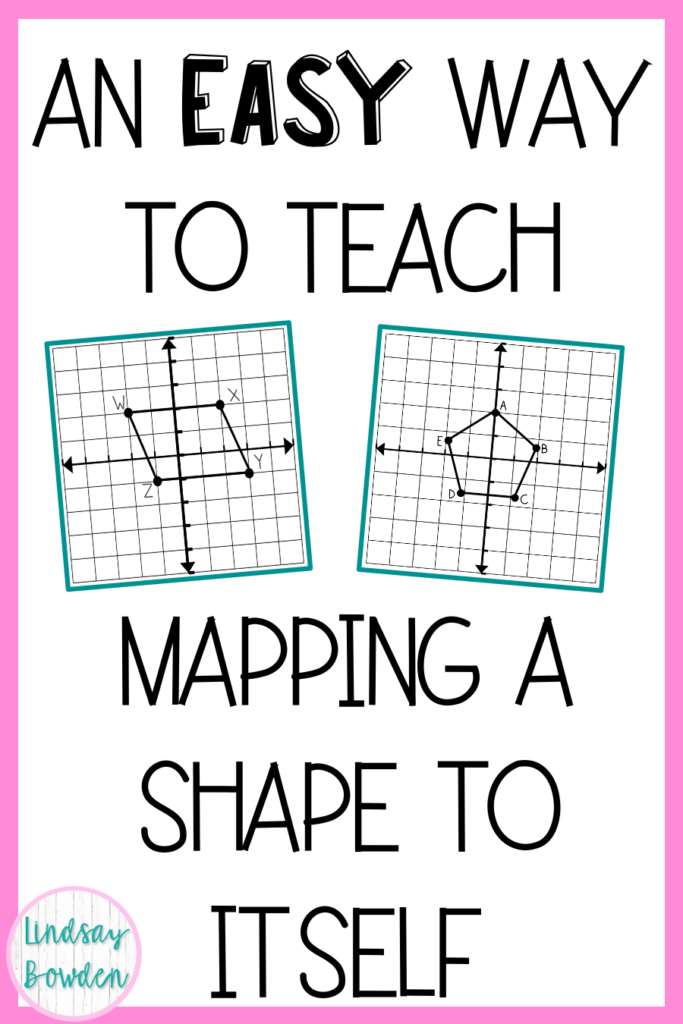
This article contains affiliate links to products. I may receive a commission for purchases made through these links.
This geometry lesson is one of my favorites! Students get that “ah-ha” moment that all teachers want!
Mapping a shape to itself is always a little tricky for my students to grasp. They need a very concrete visual in order to master this topic. I created this geometry lesson as a discovery activity to help students discover mapping a shape to itself in a hands-on, engaging way.
You may also like these blog posts:
For this activity, you will need:
- •Patty paper (great deal on Amazon here)
- •Large graphs with shapes
- •Student answer sheet
Before you begin this geometry lesson, it may help to quickly review lines of symmetry and rotational symmetry. Students might remember, but a refresher never hurts. Here are the steps for this discovery activity:
Step 1:
First, give each student a sheet of patty paper and a large graph with a shape (about half a sheet of paper). They will also need a pencil.
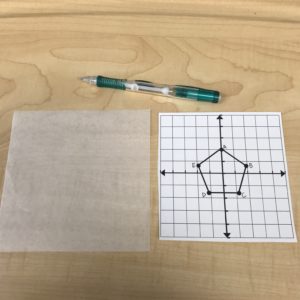
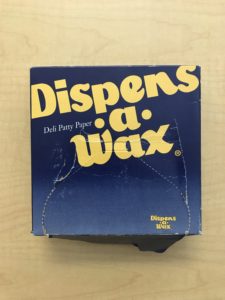
Step 2:
Next, tell the students to trace the shape including the letters onto their patty paper. Make sure they include the points. They do not need to draw the x-axis, y-axis, or any grid lines.
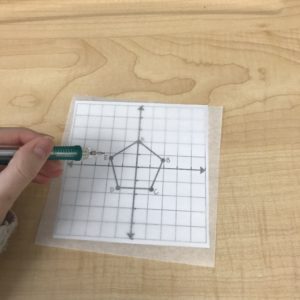
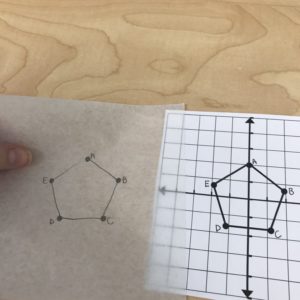
Step 3:
Then, tell students to rotate the patty paper clockwise on top of the graph and see if they can make the points match again. They should keep rotating until they get back to where they started (so that the letters on their patty paper match the original graph).
Students will then record how many times they were able to rotate their shape on their student answer sheet (available with this free lesson by subscribing below).
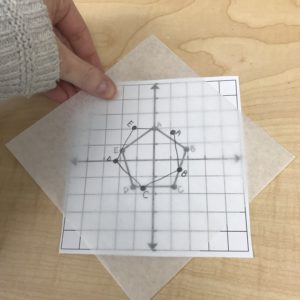
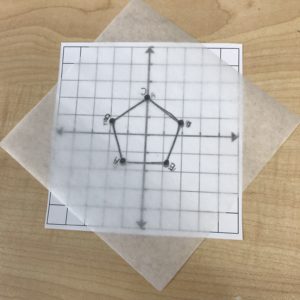
Step 4:
Now, tell students to find a line of symmetry on their shape and draw it. To check if the line is a line of symmetry, they can fold the patty paper over that line and hold it up to the light. If the vertices of the shape meet, then that line is a line of symmetry.
Ask students to draw any more lines of symmetry and record the number on their student answer sheet.
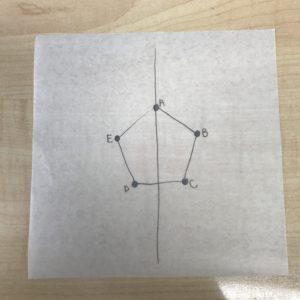
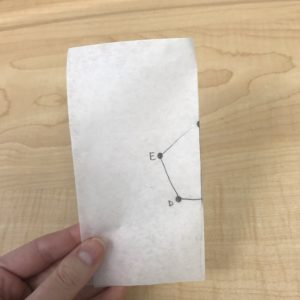

Step 5:
After students complete these steps, give each student a second sheet of patty paper. Tell them to switch shapes with a student so that they have a new shape. Then, they will repeat the process and record their answers on their student answer sheet.
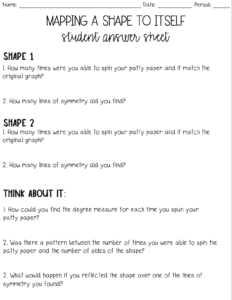
Step 6:
Once all students have completed two shapes, I have a class discussion. The discussion is a vital part of this geometry lesson. Some of the questions I ask are:
- How could we find the degree measure of each rotation?
- Do the number of lines of symmetry relate to the number of sides?
- How many lines of symmetry were you able to find?
All discussion questions are found in my free lesson. During the discussion, I show students that by reflecting a shape over a line of symmetry, the pre-image and the image look the same. The students have seen from their patty paper that by rotating the shapes a certain amount, the pre-image and image look the same.
After the activity:
After our discussion, I tell students that we have just learned how to map a shape to itself. I explain that mapping a shape to itself means that the pre-image and image look the same.
After this discovery activity, I start the notes on mapping a shape to itself. Get my notes and practice worksheets here.
When I started using this discovery activity, I noticed that students were able to understand this concept much more easily. I hope this geometry lesson proves to be helpful for your students as well!
Do you have any fun activities for teaching mapping a shape to itself? Let me know below! Happy teaching!
You have the ability to create amazing resources for your classroom! Head to LindsayBowden.com/Training to sign up for my FREE training on creating engaging resources.






